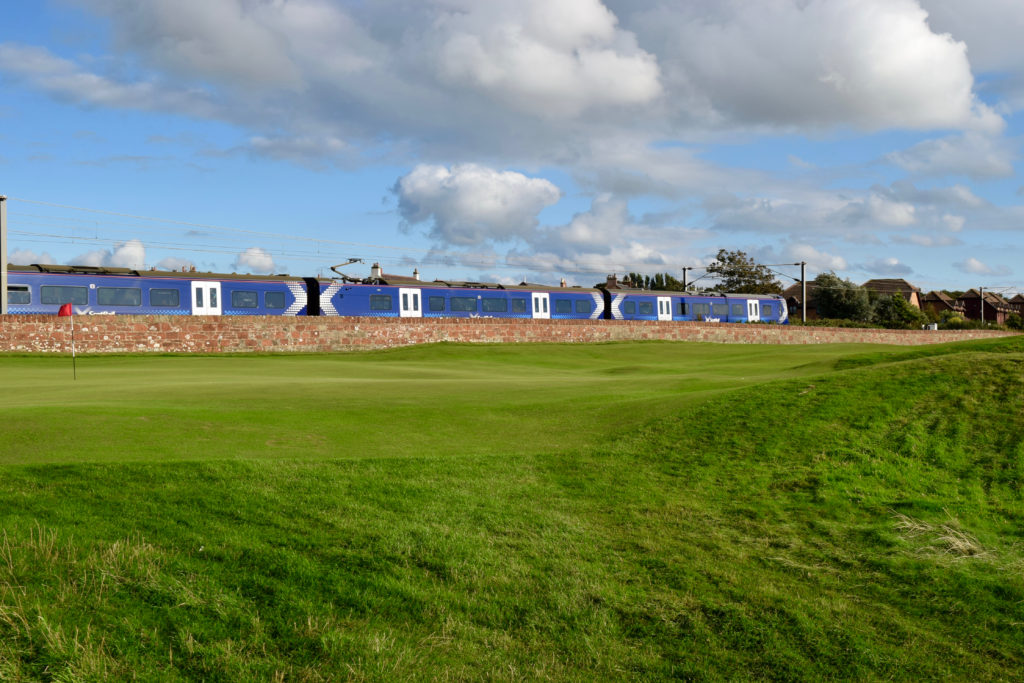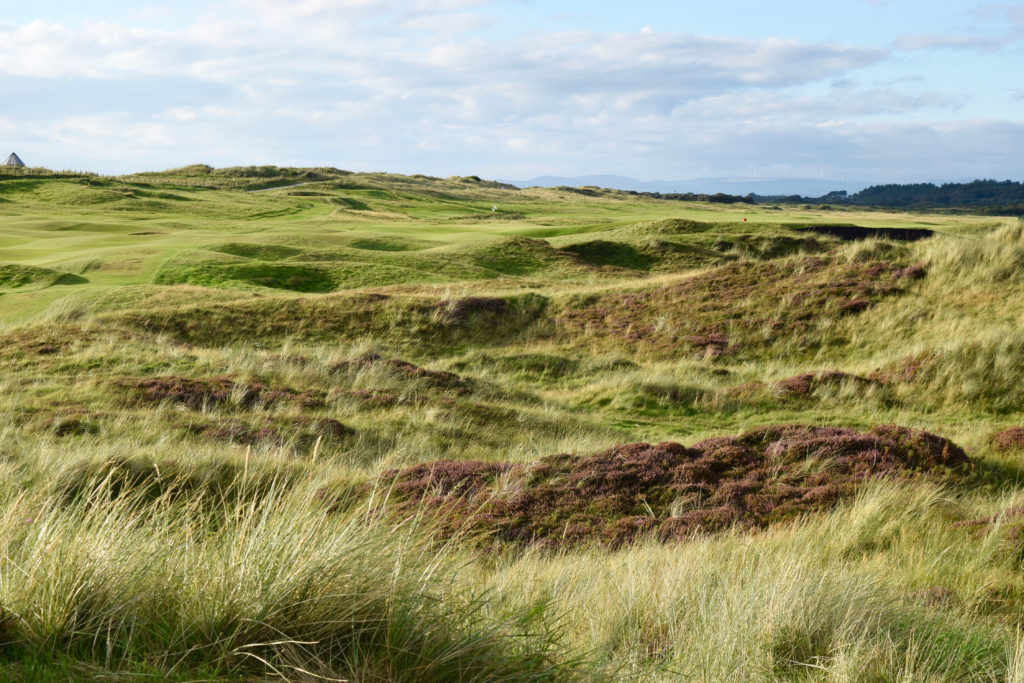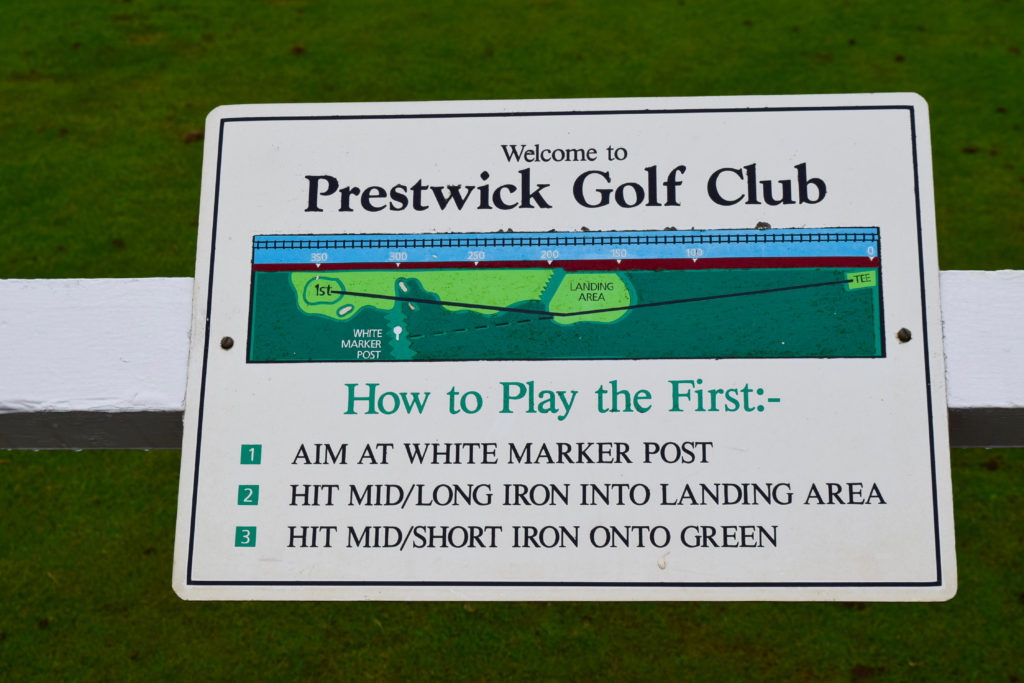Scotland, day four: Prestwick GC, as old as golf and still feisty
Dating to 1851, site of the first Open Championship, Prestwick is more than a relic
PRESTWICK, AYRSHIRE, Scotland — Old Tom Morris laid out the first 12 holes of Prestwick Golf Club in 1851, though golf had been played there even earlier. In 1860, the very first Open Championship, known in the United States as the British Open, was held there, and in 1882 Morris designed the final six holes, though by then he was back as greenkeeper at the Old Course at St. Andrews.
The golf course is bordered by the sea — the Firth of Clyde — though you only hear it from the course, on the other side of the dune, and by the railroad tracks that still carry trains back and forth between Glasgow and Ayrshire.
It is truly an urban course. You can see a huge, modern factory across the tracks (and also an old graveyard), hear the airplanes that fly in and out the Prestwick Airport, as a city has grown up around the course. When we played Monday, shortly after noon, the day was gray, the morning had been rainy; the course seemed simply rough, rugged, and not that attractive. For first-timers without a caddie, it was hard to navigate sometimes, despite detailed parting advice from Bobby, the starter.
“Seriously quirky,” a pro at another Ayrshire golf course — and there are 16 links courses in this Ayrshire Golf area southwest of Glasgow, most clustered between Irvine and Ayr — had told us. “But fun.”
And then, in late afternoon, the sun broke through, highlighting the fescue and the purplish heather, casting dramatic shadows through the contours on the fairways and the greens, shading the bunkers here and there, and now you saw the amazing beauty of the golf course, along with the challenge.
The historic place, created some 165 years ago, seemed vibrant.

The history here is significant. It held 24 Open Championships, champions including Old Tom (four) and Young Tom Morris three times, and James Braid, and Harry Vardon, the last in 1925, after which the space was deemed too cramped for spectators. It has given golf some of the most famous, and most-copied, holes in golf course architecture.
The third hole features the Cardinal Bunker, huge, deep, crossing the entire fairway, the side fortified by black wooden planks. The fourth hole, is believed to have introduced the principle of the dogleg. The fifth, called Himalayas, is another legendary hole, a par 3 with a blind tee shot over a 25-foot sand hill. The 17th, considered the most famous hole at Prestwick, is a par 4 called “The Alps,” with a blind second shot over a dune to a hidden green, and between the dune and the green is an enormous bunker called Sahara, bigger than the green itself.

At this old course, seven of the original greens are still in the same place. The Cardinal Bunker is still in the same place. The bunker on No. 16 where Willie Campbell took four shots in 1887 to lose the Open Championship, now called Willie Campbell’s Grave, is still there.
The first hole, called Railway, is among the most famous in golf, with a stone wall hard down the right side to separate golf course from railroad tracks, but there’s not much safe harbor left, either, on this par four, just gnarly rough, so golfers tee off with long irons or hybrids. Quirky, yes.

In “Blasted Heaths and Blessed Greens,” the late James W. Finegan wrote: “Prestwick has it all; towering sandhills, fairways straight out of a moonscape, hidden greens cunningly defended by humps and hollows, two of the world’s most storied blind holes, one of the world’s three or four most spectacular sand bunkers, fairways and greens of true seaside turf, and, withal, a handful of golf holes that, by any standard, are superlative. … Prestwick, so little changed over more than a century, may indeed be a monument to the era of the gutta percha ball. But it is no tombstone. The golf here continued to be gloriously vital.”

The course is long, and difficult. From the white tees it plays 6,551 yards, and there are five par fours of at least 430 yards. Greens fees are 165 British pounds, or $217, for a single round, and 225 pounds, or just under $300, for a day pass.
“You’re playing a championship golf course here,” said caddie master Andrew Erskine, who has worked at Prestwick for 28 years. “This is a difficult golf course. It’s not the longest, but it’s got some long par 4s, and the defense is the wind as well. The rough and the wind are its defense.”
The keys, Erskine said Monday: Navigate the first few holes, surviving Railway and Cardinal and Himalayas, and then be ready to take on the tough heart of the course that spans six through 12, with those long and difficult par 4s, and realize that the closing holes can be tricky but scoreable.
Erskine, who still loops several times a week, said he tells his clients:
“Pretty much, the tee shot is probably key on every hole. If you can keep it in play off the tee, you can score. If you go off-line off the tee, you’re going to rack up a number. Because most of the time if you lose it left or right, particularly on the longer holes, it’s a lost ball.
“If we lose it left or right, and we find it, don’t get greedy with it. We can still make par from here. But get it back in play, knock it on the green and get your par. You’ve got to use your head. Because if you go for the big shot there’s risk-reward.”

I asked Erskine how many bunkers there are on the course. From memory, he went through the course, counting them mentally, hole by hole, and provided this answer: 94.
Sounded reasonable. Monday, I figured I was in at least 10 percent of them. At the invitation and intercession of David Connor of VisitScotland, I played Prestwick on Monday with three Northwest colleagues in golf journalism:
Former Register-Guard sports editor and columnist (and then of the Seattle Times) Blaine Newnham, one of the most respected golf writers in the Pacific Northwest, author of “America’s St. Andrews” about the construction of Chambers Bay and a friend and mentor to me throughout my career; Tom Cade, director of communications for the Pacific Northwest Golf Association and editor of Pacific Northwest Golfer Magazine, and Rob Perry, the immensely gifted photographer (and golfer) who specializes in golf courses.
On such a difficult golf course, the other lads acquitted themselves very well. Cade, who plays to a 1.4 handicap, shot a 3-over 74 with four birdies. Perry, a 4.4, shot 78. Newnham, with a respectable 96, trounced me in the daily match of former Register-Guard sports editors to go one-up for the trip.
Despite five pars, my own day was as rugged as the course, a 102 that included those multiple bunker visits (usually not ending well) and three lost balls, none found, bringing my four-round Scotland total to five lost, five found.
At this venerable site, through no fault of the golf course, I managed to mess up just about every iconic hole. I found the railway tracks on the first hole — ball bounced over the wall. I failed to clear the Himalayas. I butchered the Alps. At least I avoided the Cardinal Bunker.
But, as Finegan wrote: “You have not played golf in Scotland unless you have played this great and inimitable course.”
So, there’s that.

